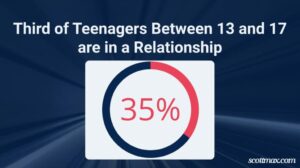
From differences in age and diverse partnerships to relationships influenced by Tinder, these figures are far from ordinary.
So, grab a drink and get comfortable, as we explore the “35 Facts About Relationships in 2024.” Whether you’re navigating the complexities of modern love or simply curious, there’s something here for everyone.
Teenage Relationship Stats
Let’s explore the realm of young romance, where hearts are just starting to flutter and bonds are forming. Here are some important relationship statistics for teenagers in 2024:
Teenage Dating Insights
Surprisingly, 35% of teenagers aged 13 to 17 have some dating experience. This includes those currently in relationships and those who have explored casual or serious connections.
For those curious about sweethearts, 40% of teens are in committed relationships, while 16% have had past romantic involvements but are not currently dating.
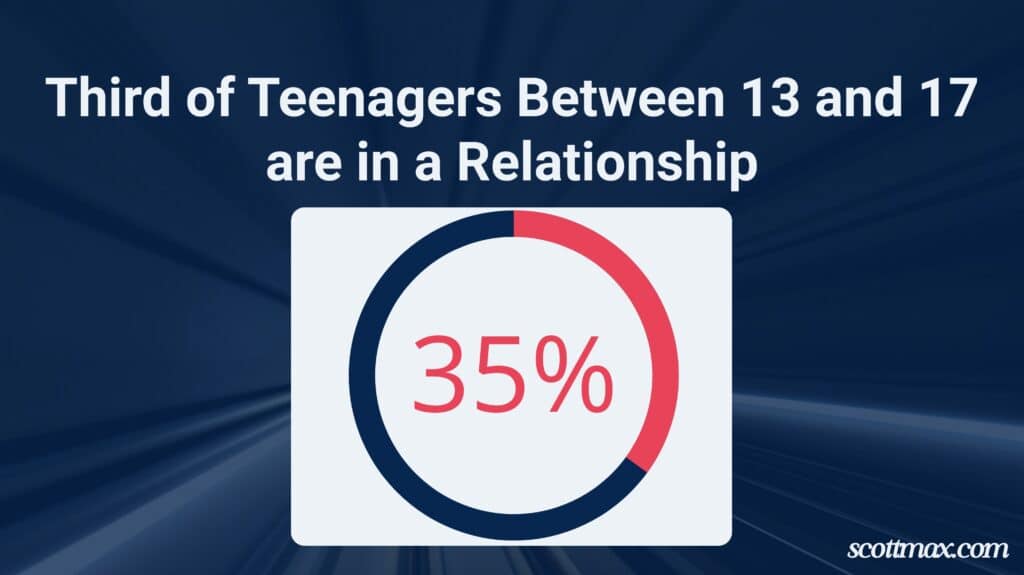
Verified in 2024 | 👨🎓Cite this data. This picture is free to use.
Romance in High School
You may have heard of high school sweethearts getting together during their school years. Interestingly, 14% of couples met in high school, but only one out of five of these couples pursued further education together in college.
Even more intriguing, less than two percent of these high school couples graduated from college together. This suggests that marrying your high school sweetheart might mean a less competitive journey in the workforce.
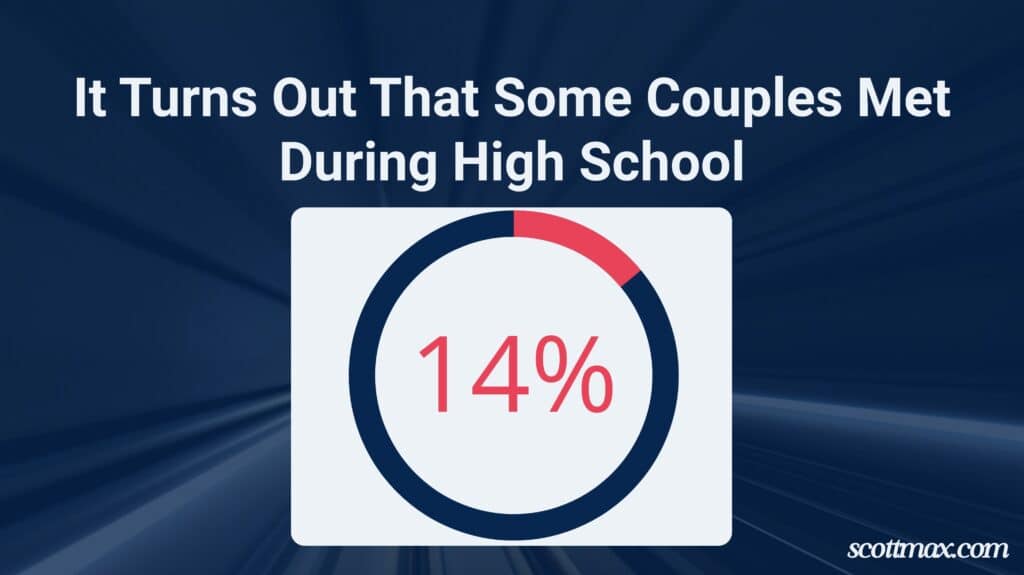
Verified 2024 | 👨🎓Cite this data. This picture is available for public use.
Face-to-Face Connections Are Still Popular
Even with the rise of online friendships, it’s interesting that 26% of teenagers met their partners in person. While a significant 57% of teens form friendships online, only 8% mention finding their partners there.
And when they did find them, it often happened through platforms like Facebook or other social media sites.
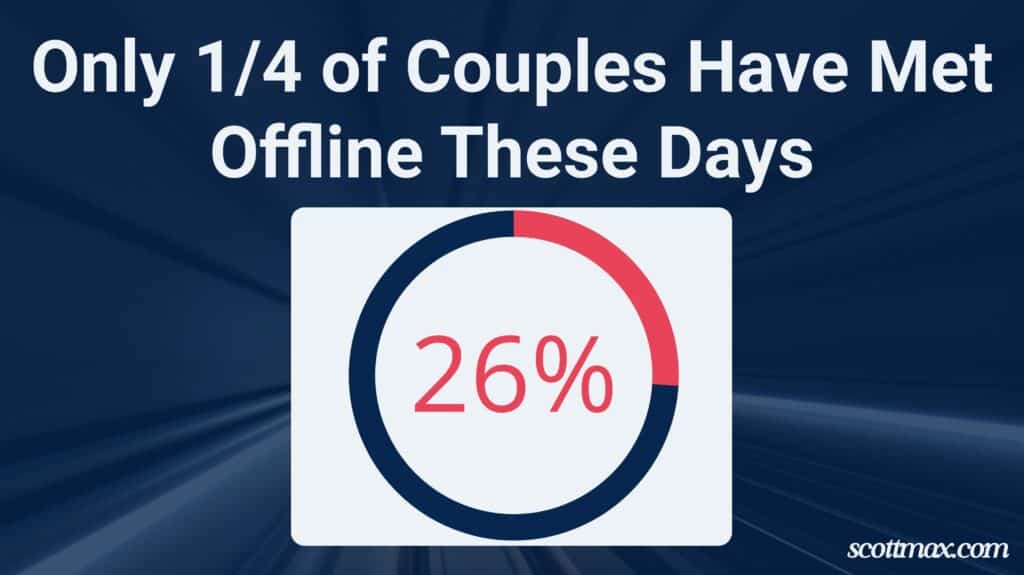
Verified 2024 | 👨🎓Cite this data. This picture is available for public use.
Romantic Interactions Among Teens
Ah, young love! Here’s an interesting fact: 55% of teenagers aged 13 to 17 have flirted with someone. What’s more surprising is that 50% of them did so through social media platforms like Instagram or Facebook.
Furthermore, almost half, 47%, conveyed their feelings for someone by engaging in activities such as comments and likes. It seems digital heart emojis are all the rage these days!
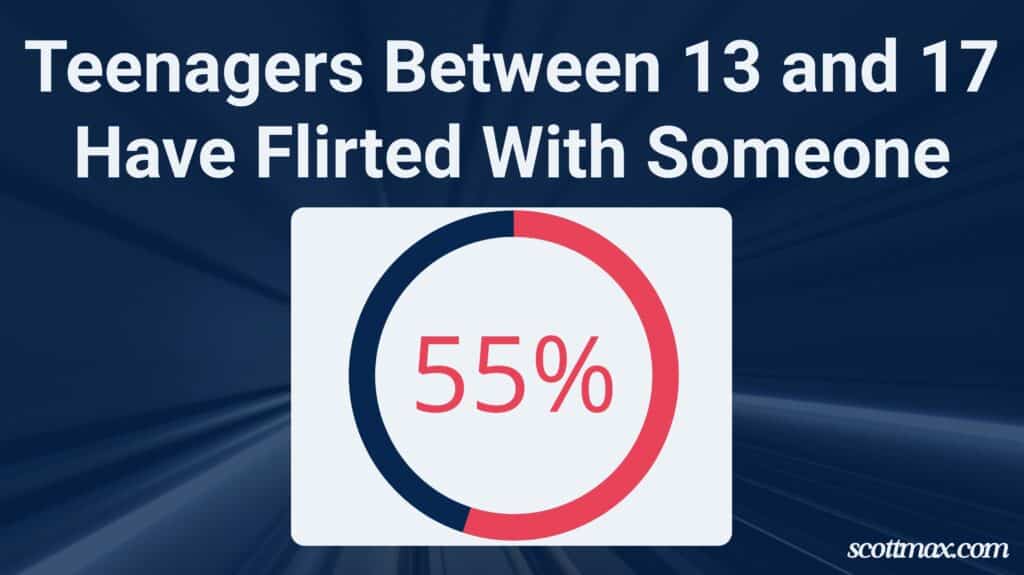
Verified 2024 | 👨🎓Cite this data. This picture is available for public use.
College Relationship Stats
Entering the college world, where life is a mix of self-discovery and the transition into adulthood. Below are some fascinating relationship statistics for college students in 2024:
Serious vs. Casual Relationships in College
College years may appear to be all about casual encounters, but here’s a surprise: 63% of college males are actually looking for serious relationships.
Women in college are not far behind, with an impressive 83% seeking traditional relationships in the love department. However, many are open to short-term, casual affairs.
One reason for this trend is their intense focus on academic achievements and ambitions, which leave little time for long-term commitments.
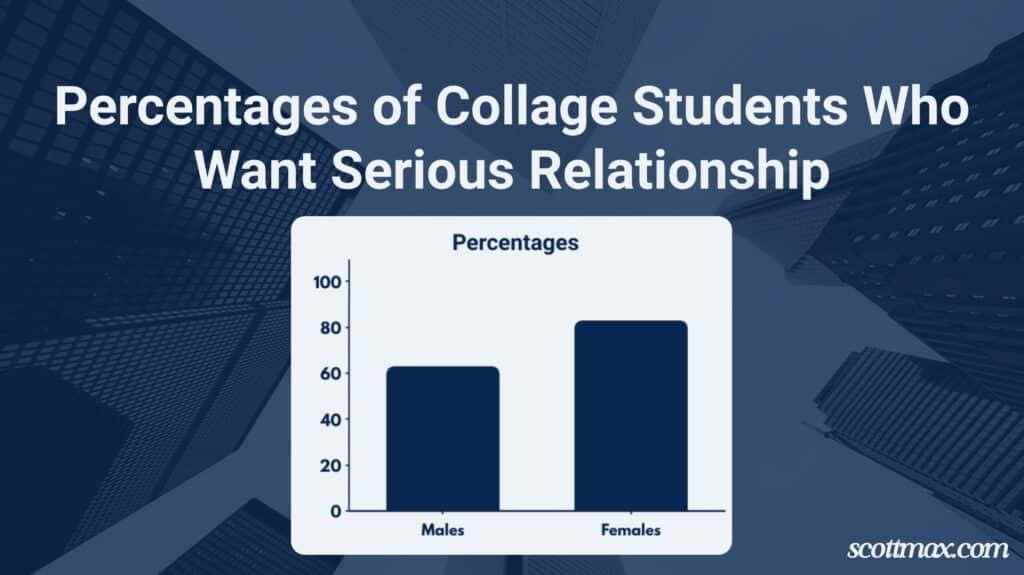
Verified 2024 |👨🎓Cite this stat. This picture is free to use.
Real Stories of Love from Far Away
You might be amazed to find out that 75% of university students have had a long-distance relationship. Among these lovebirds, 66% found the biggest obstacle to be the lack of physical closeness, while 31% mentioned that not having sex was the most challenging part.
The good news is that more than half of these long-distance relationships managed to survive the distance and stay strong.
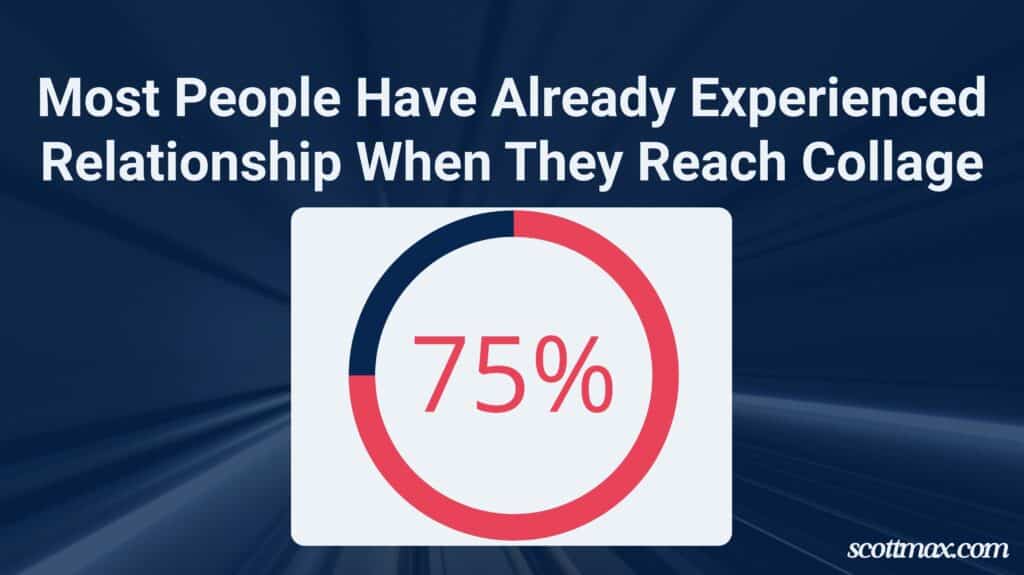
Verified in 2024 | 👨🎓Cite this stat. This picture is copyright free.
Seniors in College and Being Virgin
This might surprise you—24% of college seniors are still virgins. Yes, one-fourth of male and female students in their last year of college have never engaged in sexual activity before college.
For individuals aged between 20 and 24, 12% of women and 13% of men proudly consider themselves virgins.
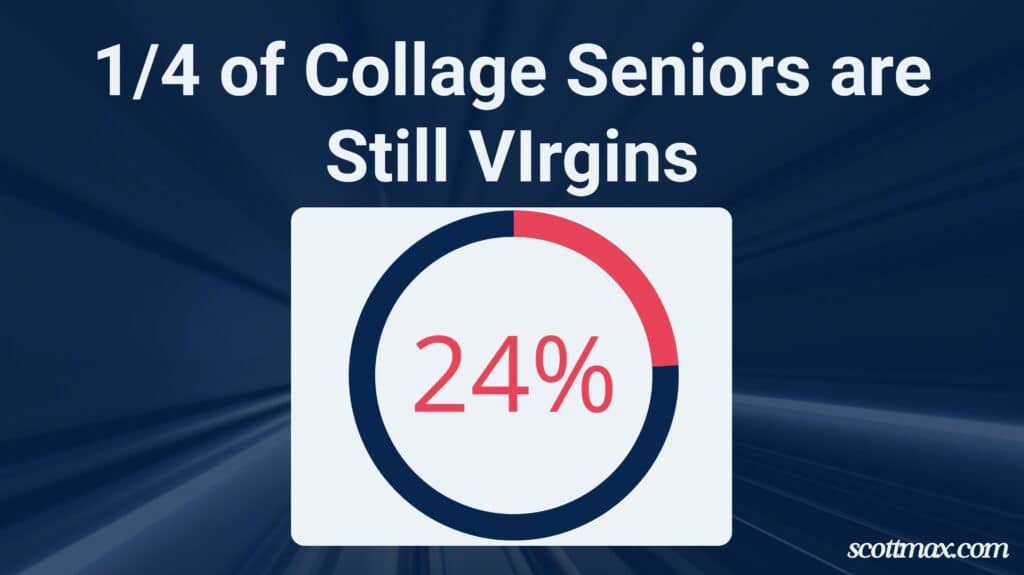
Verified in 2024 | 👨🎓Cite this stat. This picture is copyright free.
Statistics on Relationships for Millennials
Oh, millennials, the generation that keeps us guessing. They have their own unique set of relationship statistics from 2024 that reflect how they handle matters of the heart. Let’s explore:
Concerns About Financial Stability in Marriage
Millennials value financial security, and 29% of them feel they are not yet prepared for marriage. This generation gives more importance to the financial side of getting married. Surprisingly, data shows that millennials are three times more likely to stay unmarried compared to the Silent Generation (those born between 1925 and 1942). Among millennials, 26% are waiting for a partner with specific qualities, while another 26% believe they are too young to get married.
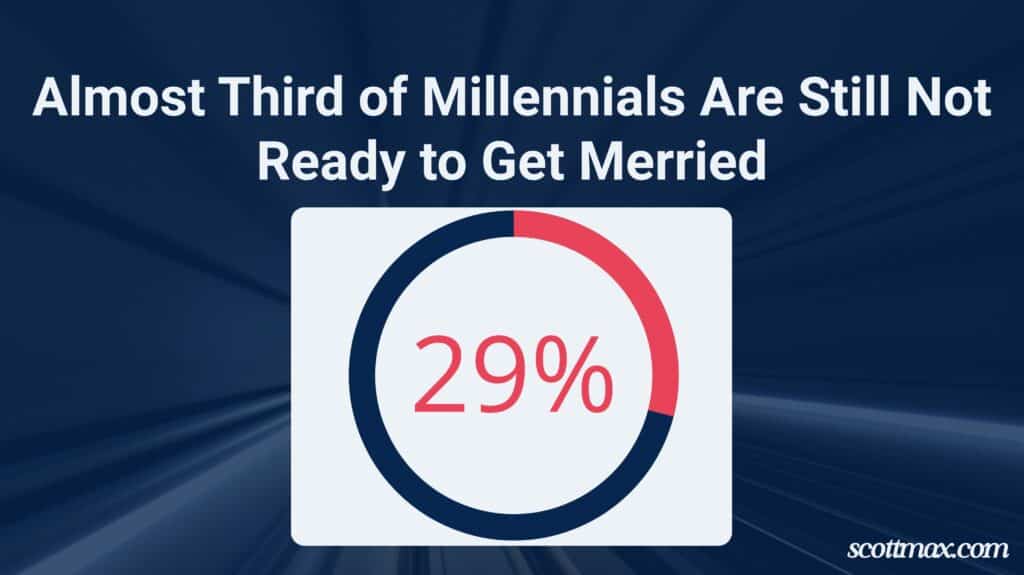
Verified in 2024 | 👨🎓Cite this stat. This picture is copyright free.
Belief in Finding ‘The One’
Millennials are not rushing into marriage. In fact, a huge 72% of them plan to stay single until they find their perfect match. However, some millennials also confess to feeling lonely as a result of this mindset.
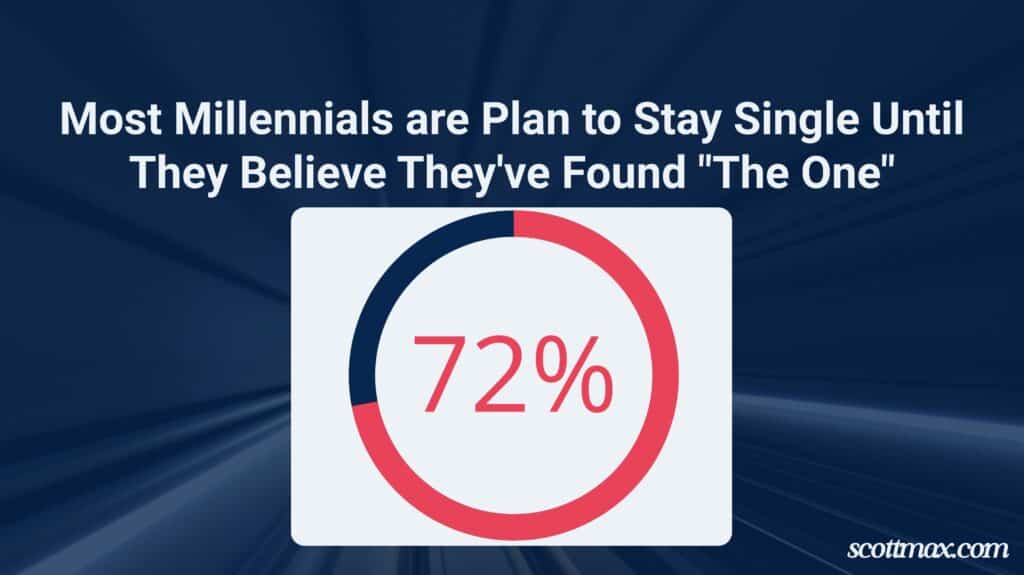
Checked for accuracy in 2024 | 👨🎓Cite this statistic. This picture is free to use.
Being Choosy About Partners
When millennials look for a partner, they are very careful. A significant 40% of them say they won’t just settle for anyone in a relationship. They prefer being single rather than being with someone they don’t see a future with.
This selectiveness is visible in their older age when they first get married, but this is also linked to a decrease in divorce rates. Half of millennials, which is 50%, have worries about long-term relationships, mainly about losing their independence.
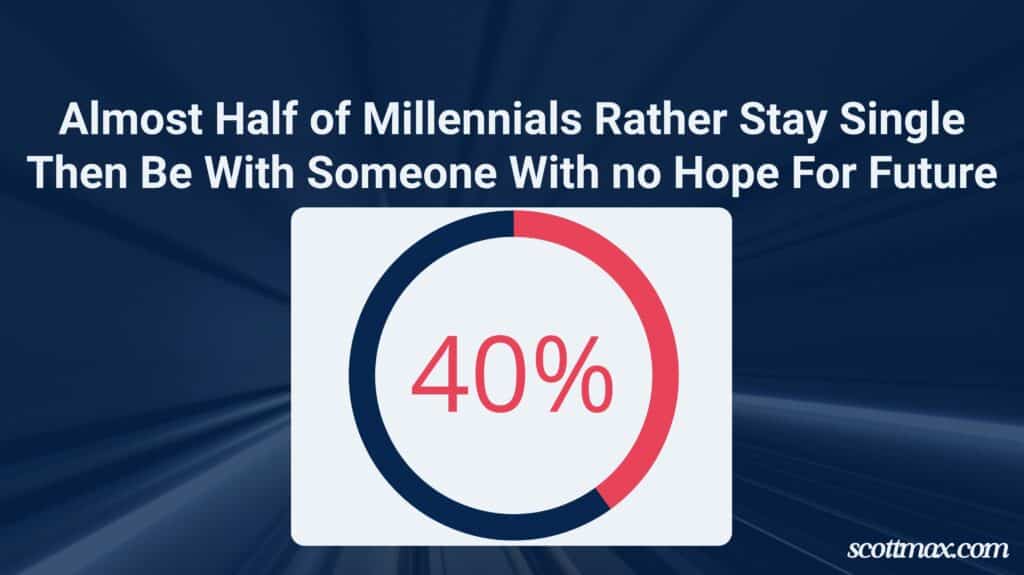
Checked for accuracy in 2024 | 👨🎓Cite this statistic. This picture is free to use.
The Wish for Marriage and Kids
Despite their caution and pickiness, 70% of millennials aim to get married in the future, and an even larger percentage, 74%, want to have children.
This generation is known for their thoughtful approach to relationships, considering the positives and negatives related to their happiness, work, and health. They seem to focus on long-term objectives.
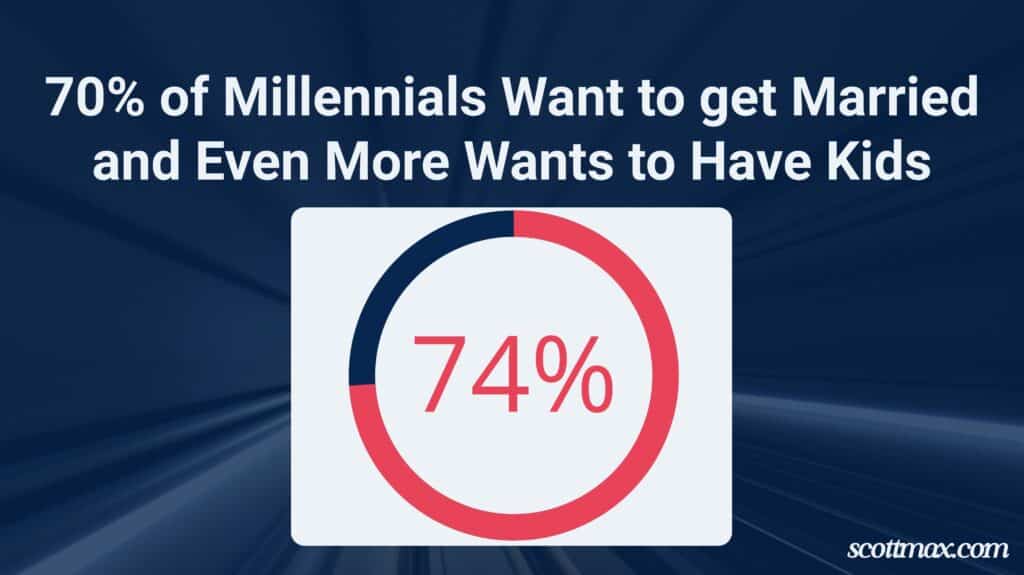
Checked for accuracy in 2024 | 👨🎓Cite this statistic. This picture is free to use.
Facts About Long-Distance Relationships
The world of long-distance relationships has evolved over time. While the era of handwritten letters and waiting for weeks for a response is over, the ups and downs of these relationships continue. Let’s explore some 2024 data to understand this modern concept of love better:
Successful Long-Distance Relationships
Good news! 60% of couples who engage in long-distance relationships are able to sustain it long-term. Typically, a long-distance relationship refers to partners living at least 132 miles apart.
These relationships are a significant commitment and can be tough, but this data demonstrates their success.
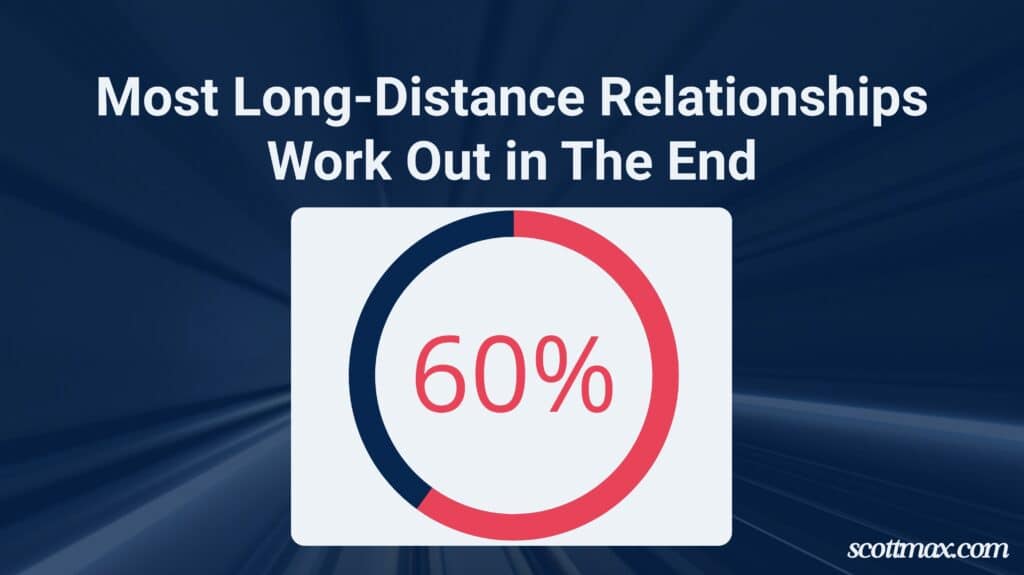
Checked for accuracy in 2024 | 👨🎓Cite this statistic. This picture is free to use.
Strengthening Bonds Through Texts
Communication plays a vital role, especially for long-distance couples. On average, these partners exchange around 343 texts per week. The more you talk, the closer you feel, increasing the chances of success.
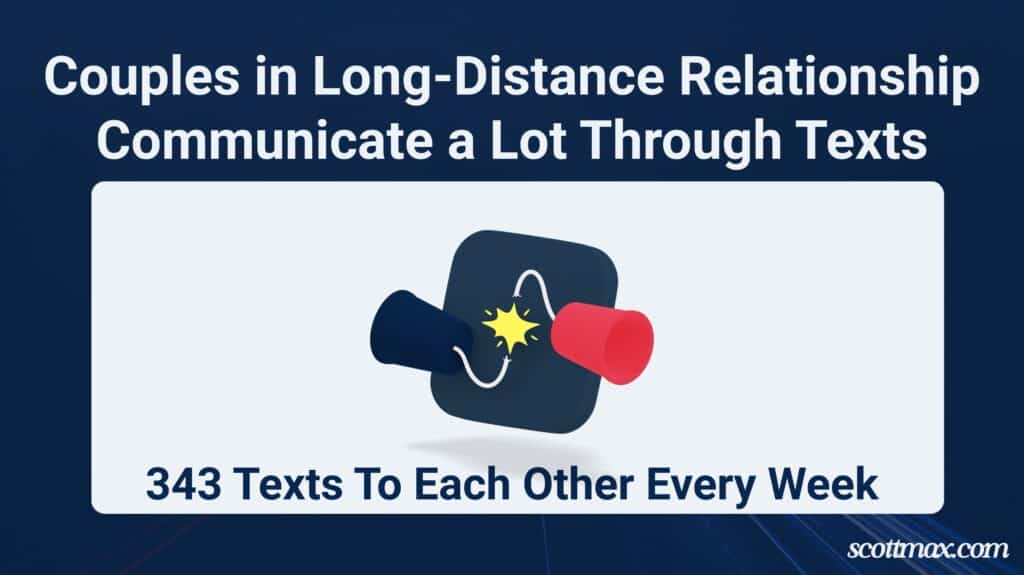
Checked for accuracy in 2024 |👨🎓Cite this stat. This picture can be used without worrying about copyright.
Love Grows Stronger with Distance
A surprising 81% of individuals engaged in long-distance relationships feel closer to their partners when they come together after being apart. For 5% of them, this time away actually strengthens their bond more than ever.
Interestingly, 70% of people communicate more frequently when they are separated.
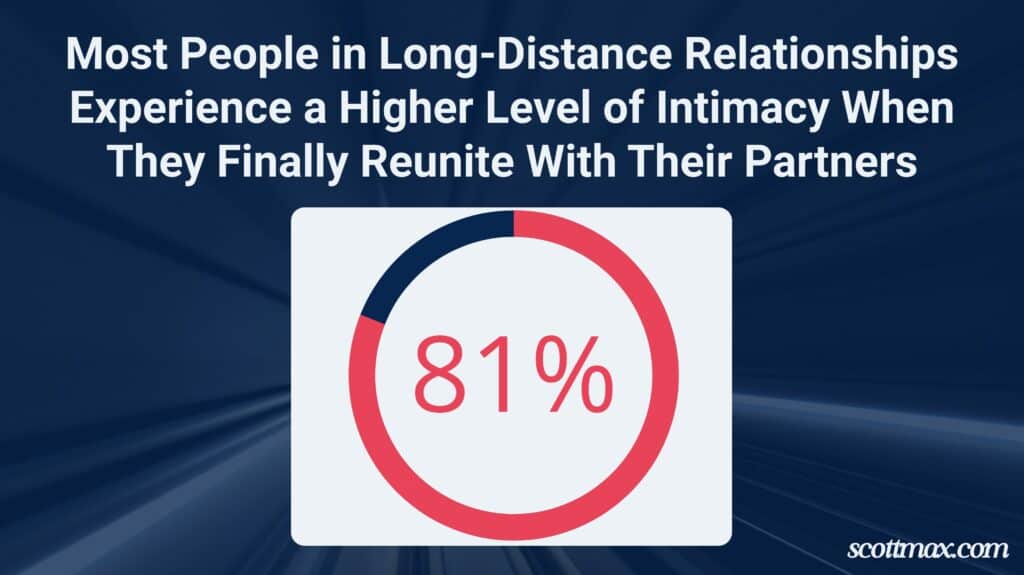
Checked for accuracy in 2024 | 👨🎓Cite this stat. This picture can be used without worrying about copyright.
The Many Long-Distance Relationships
Prepare yourself as a whopping 14 million Americans are navigating the challenges of long-distance relationships. Out of this vast number, 4 million couples are in non-marital relationships.
These relationships emerge due to various reasons like attending college, career opportunities, and military obligations.
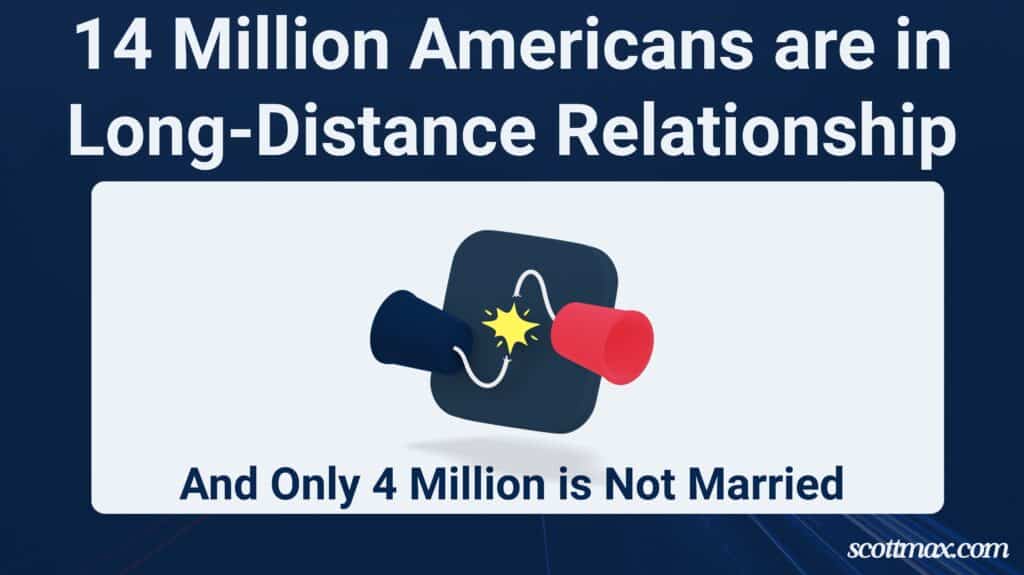
Checked for accuracy in 2024 | 👨🎓Cite this stat. This picture can be used without worrying about copyright.
Planning Ahead for Success
The success of long-distance relationships often depends on preparing for the future. A notable 66% of these couples fail due to their lack of concrete plans.
According to these statistics, some suggest that long-distance relationships typically last around 14 months, while some end within five months or even sooner, usually due to concerns about infidelity.
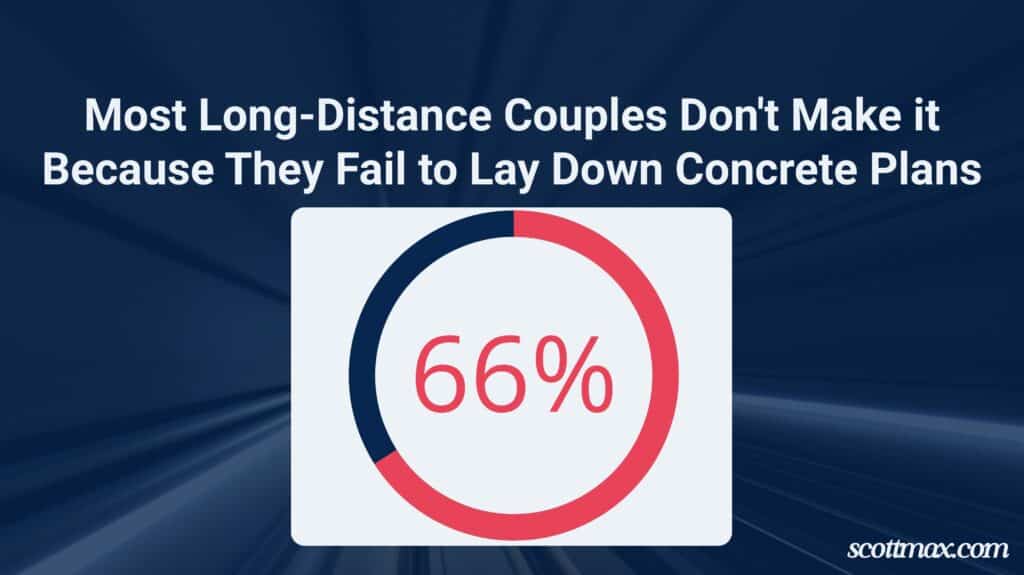
Checked for accuracy in 2024 | 👨🎓Cite this stat. This picture can be used without worrying about copyright.
Visits, Calls, and Letters
In a long-distance relationship, couples commonly meet each other twice a month or sometimes even less. They make sure to have a conversation at least once every three days. Surprisingly, many pairs still exchange letters, approximately three times per month.
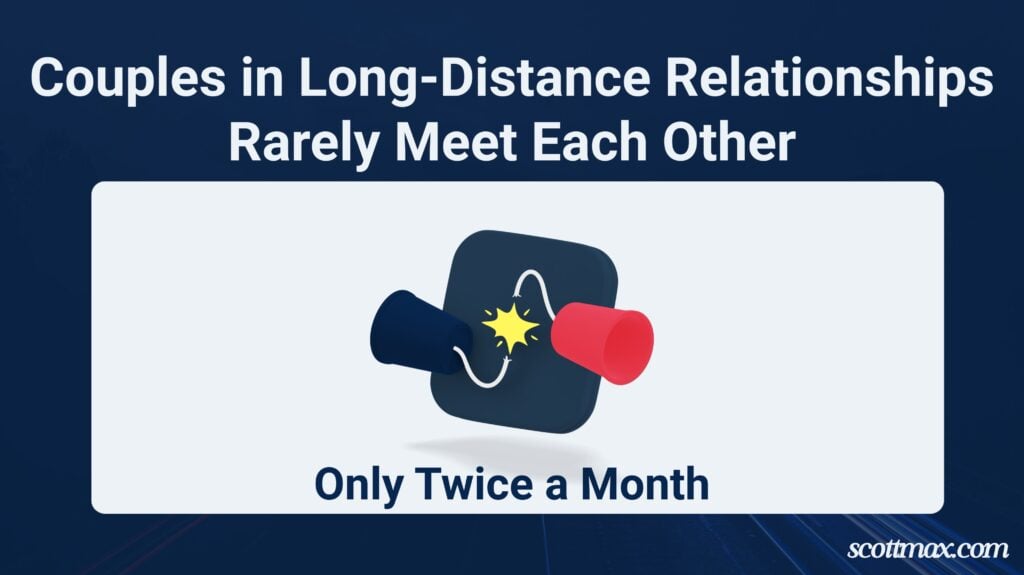
Checked for accuracy in 2024 | 👨🎓Cite this stat. This picture can be used without worrying about copyright.
Interracial Relationship Statistics
As a society, we have made progress, and interracial relationships are more widely accepted today than ever. Below are some fascinating 2024 stats. Data showing how interracial relationships are becoming more common:
Mixing Things Up in America
Impressively, 11 million Americans are currently married to someone of a different race or background.
So, it turns out that around 10% of Americans have chosen to embrace diversity in their love lives. It’s interesting to know that interracial marriage was made legal in the USA back in 1967.
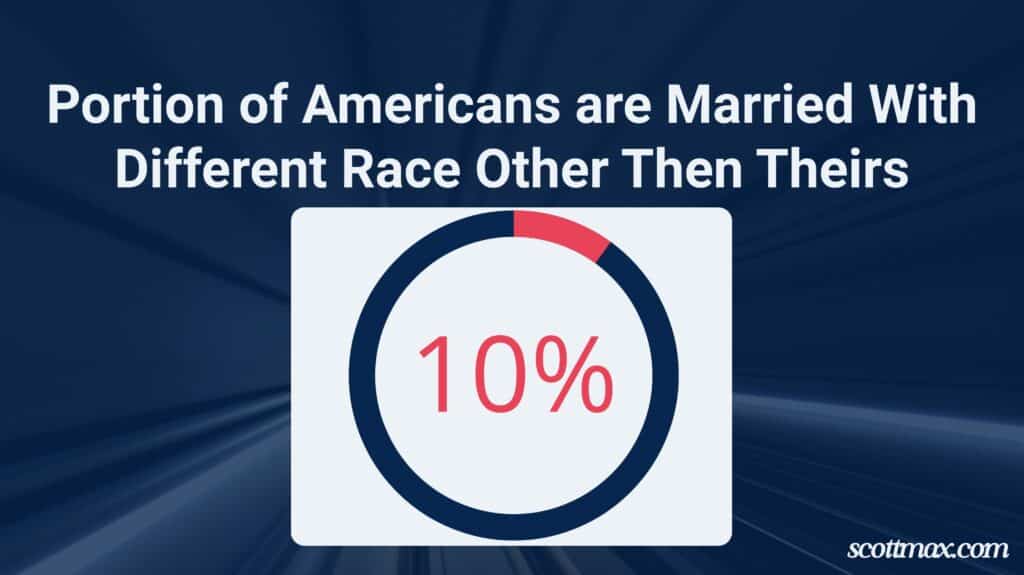
Checked in 2024 | 👨🎓Cite this stat. No restrictions on using this image.
New Couples, New Cultures
Love doesn’t care about where you’re from for Asian and Hispanic couples. A notable 46% of Asian newlyweds and 39% of Hispanics born in the USA have decided to embrace diverse relationships.
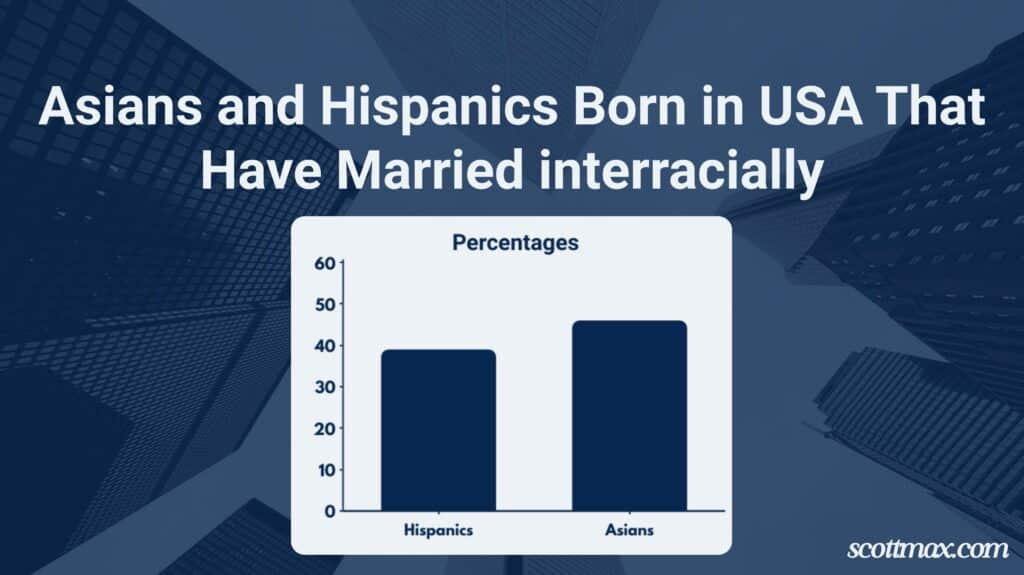
Checked in 2024 | 👨🎓Cite this stat. No restrictions on using this image.
Increasing Diversity in African American Marriages
More African Americans are choosing to marry outside their race. In 2015, 18% of African Americans tied the knot with partners of a different race or background, a significant jump from the 5% recorded in 1980.
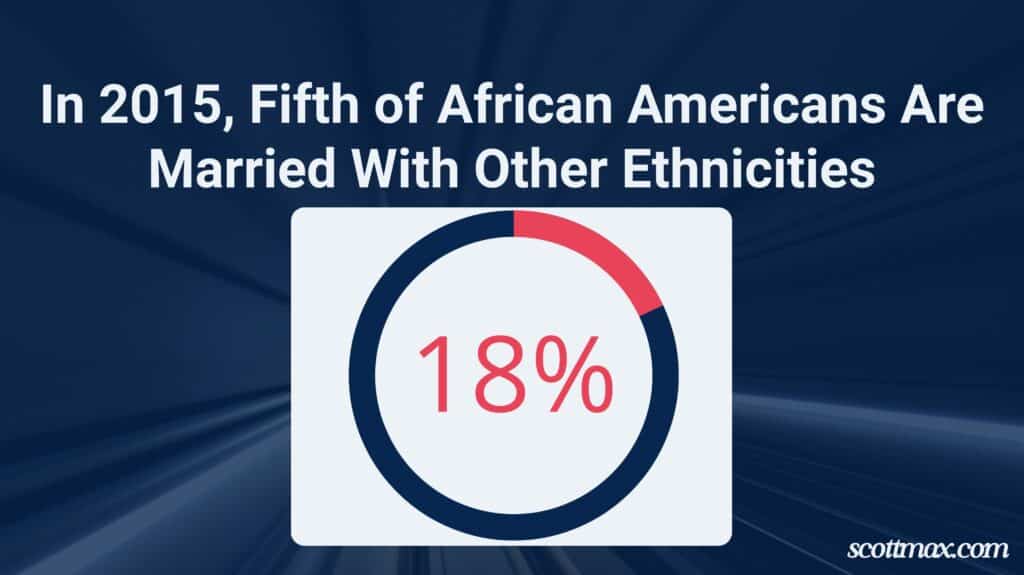
Checked in 2024 | 👨🎓Cite this stat. No restrictions on using this image.
Growth in Acceptance
Thankfully, people are more open to the idea of interracial marriages now. Currently, 39% of Americans are in favor of such relationships. Although there’s still room to grow, this percentage has risen by 15% in just seven years.
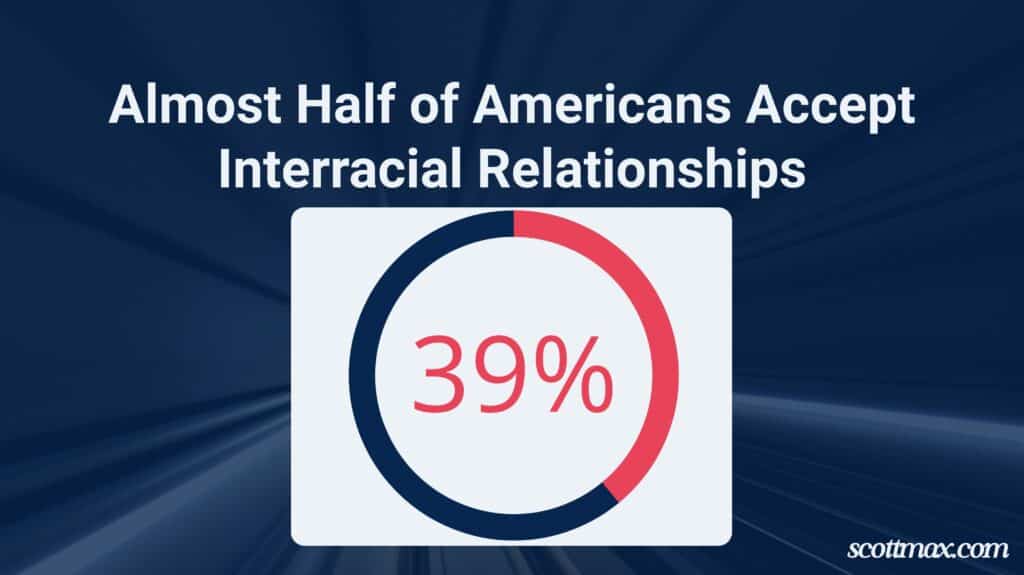
Checked in 2024 | 👨🎓Cite this stat. No restrictions on using this image.
Need for Diversity in Media
Youth today want to see more representation of interracial couples in movies and TV shows. A considerable 56% of individuals aged 18 to 29 believe that TV programs should showcase more interracial couples.
In fact, 43% of women and 39% of the general population are eager for greater visibility of interracial relationships on screen.
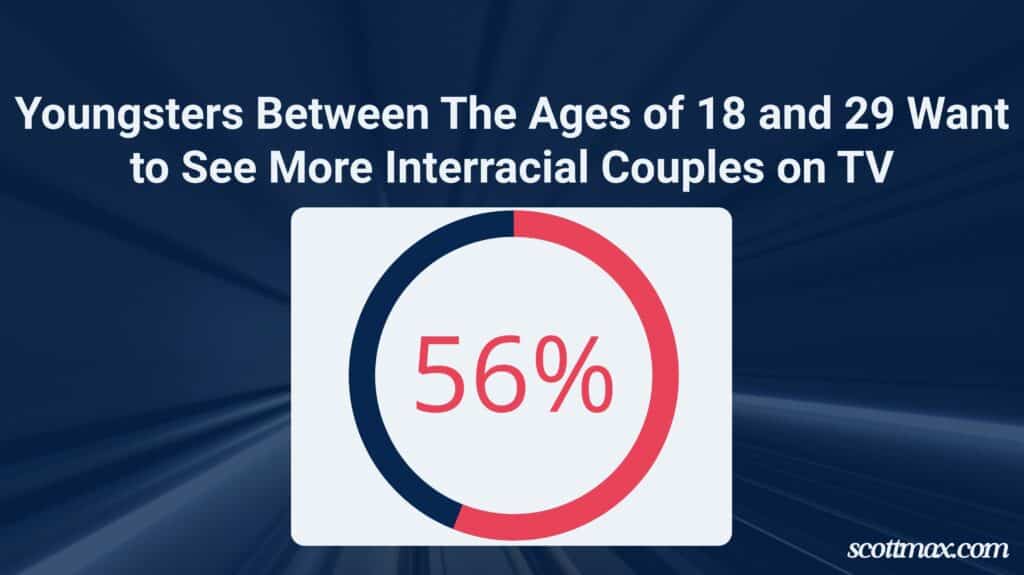
Checked in 2024 | 👨🎓Cite this stat. No restrictions on using this image.
Popular Locations for Interracial Marriages
CertainCities in America are setting an example in mixed-race marriages. Honolulu leads the way, with a surprising 43% of its marriages being between people of different races. Following closely is Las Vegas, Nevada, where 31% of marriages are interracial. Santa Barbara, California, is not far behind with 30% of such marriages. When it comes to the statistics on age differences in relationships, it’s fascinating to note that in countries like the US and Europe, 8% of married couples have an age gap of ten years or more. Usually, it involves an older man and a younger woman. Surprisingly, only 1% of such relationships have the woman being older than the man. In Eastern countries, the age gaps tend to be even larger and more common. In terms of same-sex relationships, a significant 25% of male-male couples have a considerable age difference. This suggests that there are more gay couples with notable age gaps compared to straight couples. Research shows that the size of the age gap can impact the stability of a relationship. A study involving 3,000 individuals revealed that couples with a five-year age difference are 18% more likely to divorce. If the gap increases to ten years, the likelihood of divorce rises to 39%. Surprisingly, if the age gap is a massive 20 years, the risk of divorce soars to a remarkable 95%. Experts believe that larger age gaps can lead to differences in values, preferences, cultural backgrounds, and attitudes towards intimacy.This information was checked in 2024 | 👨🎓Cite this stat. This picture is free to use.
Stats on Abusive RelationshipsUnfortunately, not all relationships are about love and respect. Let’s explore some harsh facts from 2023 that show us how people can behave abusively in different types of relationships, even in those involving teens:Cheating in RelationshipsRegrettably, some relationships involve cheating. Approximately 20% of men and 13% of women have confessed to being unfaithful.These percentages may sound small, but when added up, they represent a significant number of people either cheating or being cheated on.It’s important to mention that the chances of cheating can change with age, and younger women aged 18 to 29 are more likely to cheat than men in the same age group.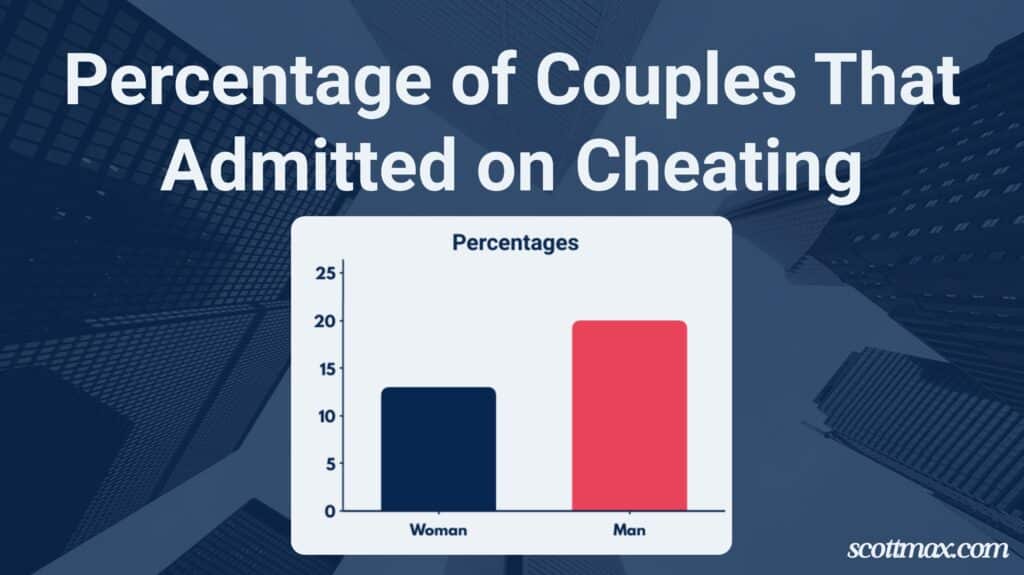 This data was validated 2024 | 👨🎓Cite this stat. This picture is free to use.Online Cheating BehaviorsIn the modern era, technology has introduced new ways of cheating. Nowadays, most cheating behaviors occur online, like developing feelings for someone over the internet, sharing personal details, or even contacting an ex-partner through messages.
This data was validated 2024 | 👨🎓Cite this stat. This picture is free to use.Online Cheating BehaviorsIn the modern era, technology has introduced new ways of cheating. Nowadays, most cheating behaviors occur online, like developing feelings for someone over the internet, sharing personal details, or even contacting an ex-partner through messages.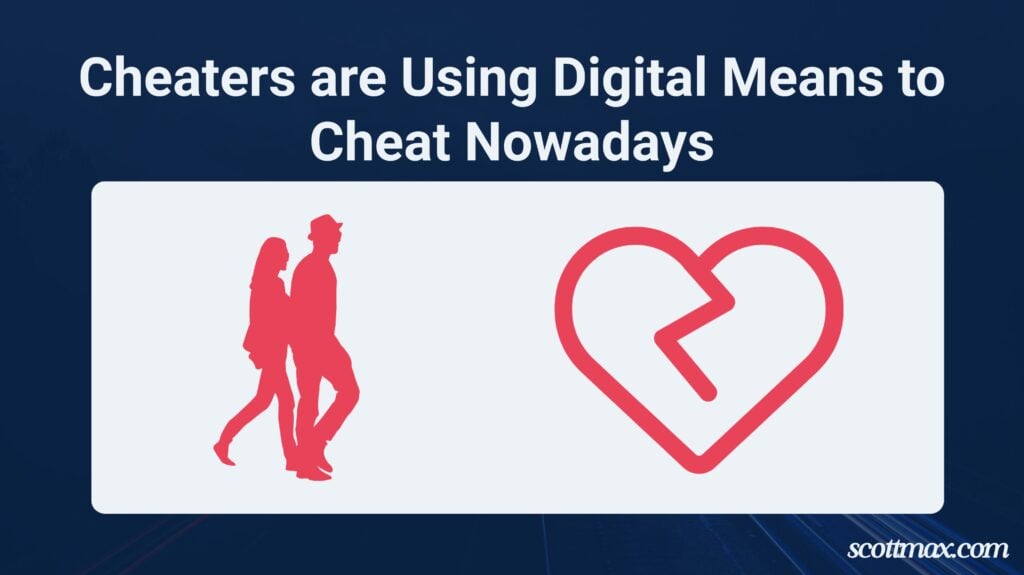 This information was verified in 2024 | 👨🎓Cite this stat. This picture is free to use.Violence by Partners among Young WomenA startling fact shows that 94% of women aged 16 to 19 have faced violence from their partners. Among them, 70% belong to the 20 to 24 age bracket.The data indicates that violent conduct often begins during the critical teenage years between 12 and 18.
This information was verified in 2024 | 👨🎓Cite this stat. This picture is free to use.Violence by Partners among Young WomenA startling fact shows that 94% of women aged 16 to 19 have faced violence from their partners. Among them, 70% belong to the 20 to 24 age bracket.The data indicates that violent conduct often begins during the critical teenage years between 12 and 18.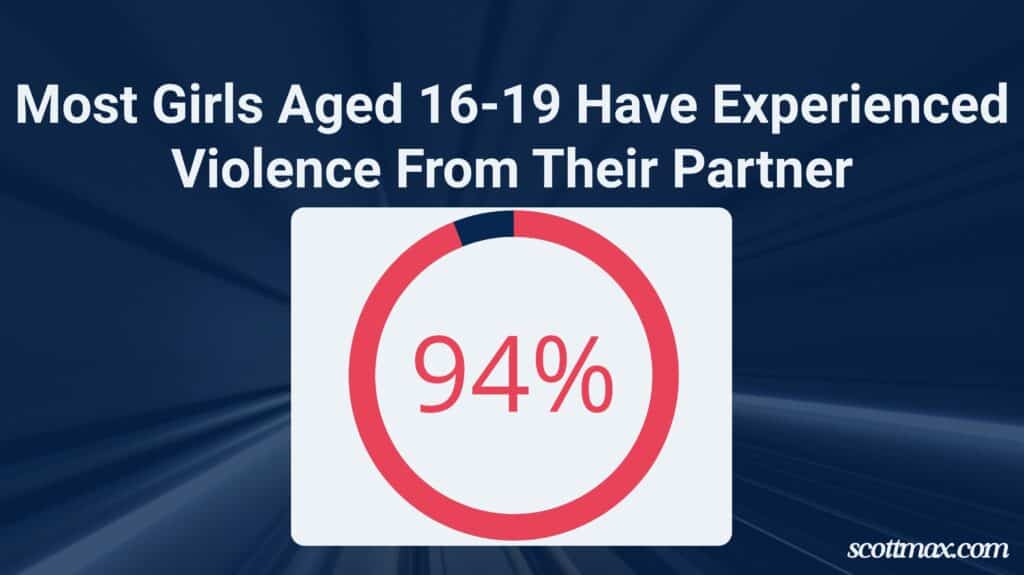 This data was checked in 2024 |👨🎓Refer to this data. This picture is free to use.
This data was checked in 2024 |👨🎓Refer to this data. This picture is free to use.
Problems in American High Schools
Distressing data shows that around 1.5 million high school students in America go through some type of mistreatment in their relationships. This implies that one out of every three high school students deals with emotional, verbal, sexual, or physical abuse from their partner.
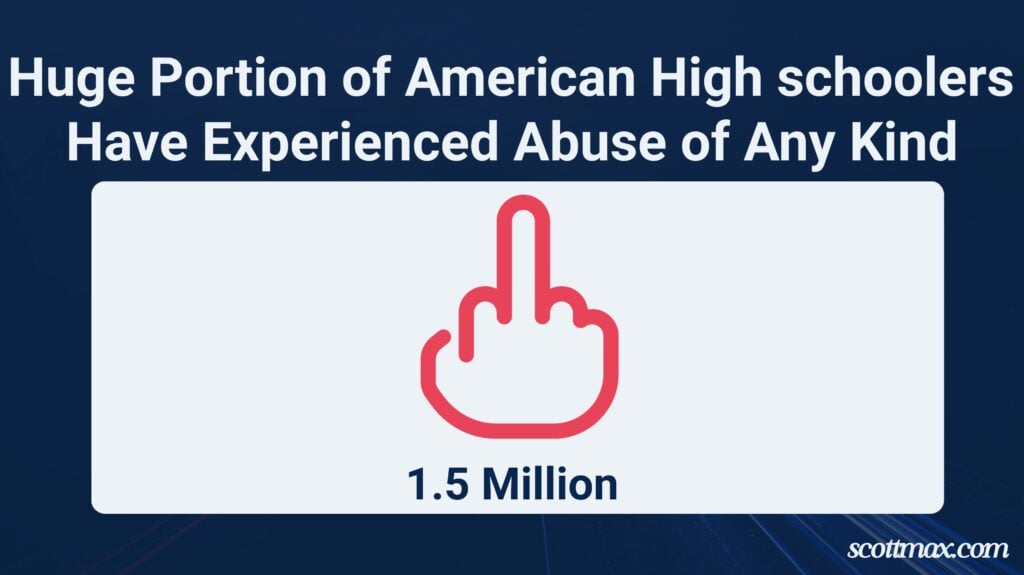
Verified 2024 | 👨🎓Refer to this data. This picture is free to use.
The Connection Between Violence and Suicide
Shockingly, half of young people who have encountered violence or sexual assault have tried to commit suicide. This is a stark difference from typical suicide rates, where approximately 5.4% of boys and 12.5% of girls who haven’t faced violence or assault attempt suicide.
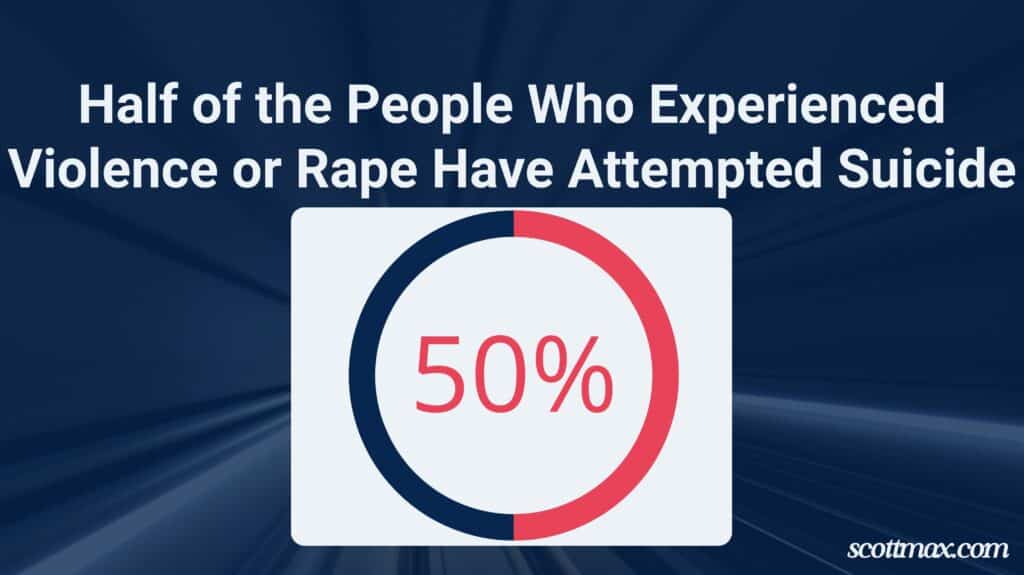
Verified 2024 | 👨🎓Refer to this data. This picture is free to use.
Relationships and Tinder Stats
In today’s digital era, online dating plays a significant role in how we meet potential partners. Let’s delve into some interesting Tinder numbers for 2023:
Tinder’s Popularity in America
Tinder boasts an impressive 7.86 million users in the United States, making it a major player in the online dating scene.
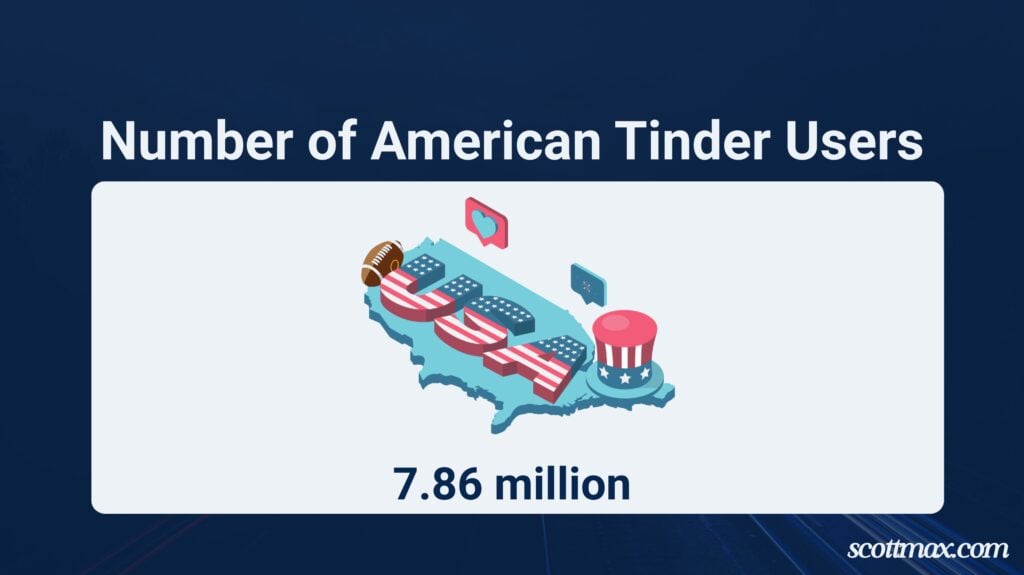
Verified 2024 | 👨🎓Refer to this data. This picture is free to use.
Boosting Self-Esteem
Receiving compliments online can greatly improve self-confidence, with 45% of Tinder users confessing to using the app for a self-esteem boost. It provides an easy way to receive compliments from strangers and feel positive about oneself.
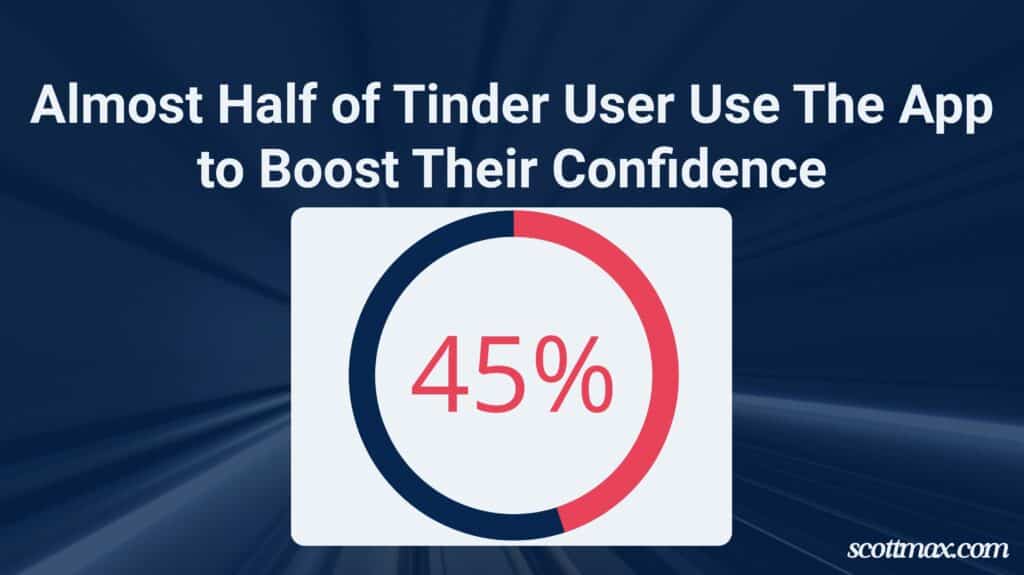
Verified 2024 | 👨🎓Refer to this data. This picture is free to use.
Embracing Diversity
An outstanding 77% of Tinder users are open to dating someone from a different ethnic background. This figure shows the increasing acceptance of diverse relationships in the realm of online dating.
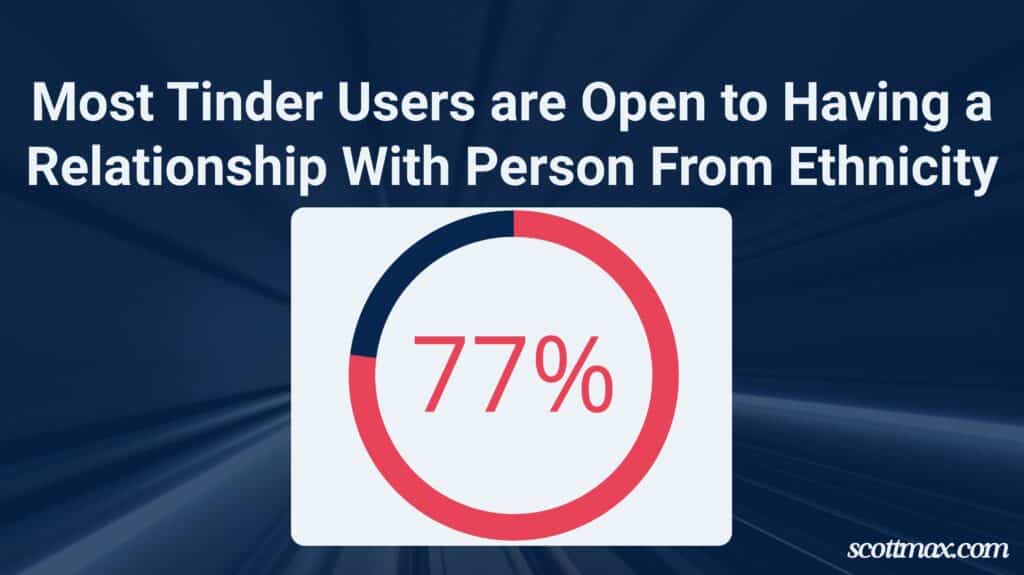
Factual info 2024 | 👨🎓Cite this stat. This picture is free to use.
The ‘I Love You’ Milestone
People on Tinder quickly say they love each other. An astonishing 85% of them express love within the initial year of being together. This shows how fast emotional ties form in the world of digital dating.
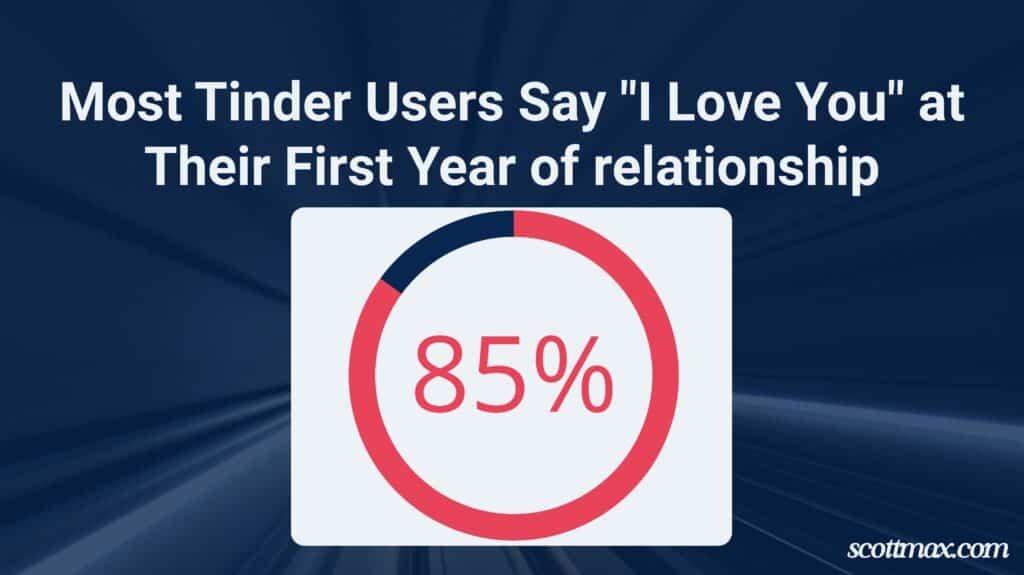
Factual info 2024 | 👨🎓Cite this stat. This picture is free to use.
Conclusion
That wraps up everything in the world of relationships in 2023! We’ve seen the growing acceptance of differences, explored how age gaps influence relationships, and looked into the interesting realm of online dating with Tinder.
Whether you’re trying to understand love dynamics or just curious, these numbers give a nice peek into the complicated world of current relationships.
So, keep interacting, dating, and loving! In today’s digital era, the connections we create are limitless. Cheers to all forms of love, now and forever!
Frequently Asked Questions
1. What is the average age of people who use online dating apps like Tinder?
The typical age of online daters varies, but many fall in the 18 to 34 age group. This range is most active on apps like Tinder, although users come from all age groups as digital dating becomes more accepted across different generations.
2. Is online dating safe?
Approach online dating with caution for safety. Safeguard your personal info, meet in public places for first dates, and trust your instincts.
Tinder and similar platforms offer safety tools and reporting features to enhance user security.
3. What are the main reasons people use Tinder?
People use Tinder for various purposes, such as seeking romance, casual meetings, and boosting self-confidence. It’s a flexible platform that caters to different dating preferences and goals.
4. How common are interracial relationships on apps like Tinder?
Interracial relationships are increasingly seen on apps like Tinder. A notable number of users are open to dating someone of a different race, indicating a growing acceptance of diversity in online dating.
5. Can relationships started on Tinder lead to long-lasting, meaningful bonds?
Indeed, relationships formed on Tinder can result in lasting, meaningful connections.
Many individuals have discovered love, companionship, and even marriage on the platform. The key is being open, communicating effectively, and investing time in understanding your potential partner, just like in any other relationship.












